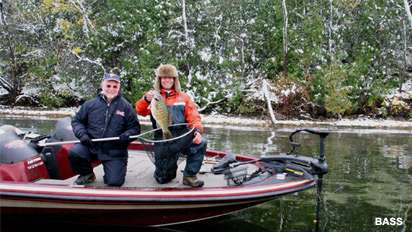
OK, it’s cold outside. But that doesn’t keep the fish from biting. Now is a great time to enjoy a day on the water. The trick is to be safe and comfortable. You do that by staying dry and warm. This 3-part series will look at how to do that effectively. Part 1 will detail options in head gear. Part 2 will look at how to keep your hands and feet warm. Part 3 will review choices in body protection.
Part 1: Your Head
Although only about 13-16 percent of the body’s blood supply is in the head, it accounts for around 30 percent of the body’s heat loss. This disparity is caused by its exposed position. It sits atop our shoulders, fully exposed to the elements with little or no protection from other body parts.
And so, the first step towards staying warm during a cold weather fishing trip is to stop the loss of body heat from your head. Here are several suggestions to do that.
1. Keep your head dry. The first step in doing this is to not allow it to get wet in the first place. Don’t take a shower just before you step outside. And don’t wear a heavy cap in a heated vehicle on the way to the ramp. That’ll cause you to sweat.
Once you’re on the water, keep your head dry. Make certain you headgear is waterproof, not water resistant. By far the best waterproof material currently available is Gore-Tex. It’s waterproof and breathes, which allows moisture to escape. There are a wide variety of caps, pullovers and hoods that are made from it. Choose one. True, it’s a little more expensive, but most things worth owning are.
2. Cover your head in layers. You hear this all the time with clothing but rarely with headgear. No matter, the principle is the same. Layers on your head will work just as well as layers on your body. They insulate and protect as well as offering you the option of removing some of them if the weather warms up a bit.
There are several effective ways to layer your head. One is to start with a ball cap and cover the cap with a high-quality insulated hood. You might want to use earmuffs over the cap and beneath the hood.
3. Consider a traditional wool stocking cap. They’ve been around forever and are still popular today. There’s a good reason for that — they work. Make sure you carry along a waterproof covering though. Wool will absorb moisture from snow, sleet and freezing rain.
4. Don’t laugh at animal fur headgear. Have you ever noticed that people living in the extreme cold environments wear a lot of animal skin and fur outerwear? They don’t do that by accident. They do it because it’s warm, it insulates, it breathes and it’s reasonably waterproof. Try it.
Any of these products can be purchased at your local sporting goods store. But all products that say Gore-Tex, wool or animal fur are not created equal. Some work better than others.
Patrick McHugh, (www.mpioutdoors.com), a nationally recognized expert on outdoor safety and survival, offers this tip to help you find the good stuff.
Some of the best products available for winter survival and comfort are made and marketed for campers, skiers and hikers. Anglers should shop in those
departments at their local sporting goods store if they want the newest and the best.”




